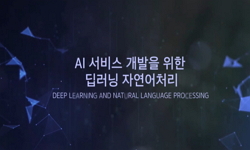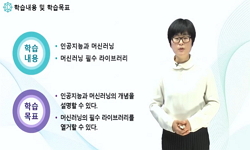According to Schmelzer (Feb., 2020), there are at least 45 Machine Translation (MT) companies operating around the world, letting alone the super cloud vendors such as Amazon, Google, Microsoft, and Facebook, etc. Although the accuracy of machine tran...
http://chineseinput.net/에서 pinyin(병음)방식으로 중국어를 변환할 수 있습니다.
변환된 중국어를 복사하여 사용하시면 됩니다.
- 中文 을 입력하시려면 zhongwen을 입력하시고 space를누르시면됩니다.
- 北京 을 입력하시려면 beijing을 입력하시고 space를 누르시면 됩니다.

구글 기계 발음번역에서의 구조적 중의성의 문제: 영어 사역명령문과 완료의문문의 사례 = Some Issues of the Structural Ambiguity in Google Machine Translation: English Causative Imperatives and Perfective Interrogatives
한글로보기https://www.riss.kr/link?id=A107313968
- 저자
- 발행기관
- 학술지명
- 권호사항
-
발행연도
2021
-
작성언어
-
- 주제어
-
등재정보
KCI등재
-
자료형태
학술저널
-
수록면
171-190(20쪽)
-
KCI 피인용횟수
0
- 제공처
-
0
상세조회 -
0
다운로드
부가정보
다국어 초록 (Multilingual Abstract)
According to Schmelzer (Feb., 2020), there are at least 45 Machine Translation (MT) companies operating around the world, letting alone the super cloud vendors such as Amazon, Google, Microsoft, and Facebook, etc. Although the accuracy of machine translation has always been a challenge, the recent technological advances seem quite striking. Among those, an AI-enhanced Google Neural Machine Translation (GNMT) is perhaps the most versatile MT in the world, as many have accepted. In 1999, Jackendoff has argued that no matter how simple grammatical matters might seem at first sight, even the most advanced computers are no match for the abilities of the human brain. Jackendoff (1999), not having done any actual implementation of his data-set, Hong (2020) has tested what is referred to as, “Jackendoff’s problem”, using AI-based Google Neural Translate (or GNMT). In this paper, on the basis of Hong’s pivot study, it is confirmed that GNMT makes a series of errors in its phonetic outputs of particular words in some specific constructions. As a sequel of Hong’s study, the current paper thoroughly compares English Causative Imperatives and Perfective Aspectual Interrogatives, arriving at the conclusion that in spite of the phonetic errors that GNMT has produced, the corresponding semantic interpretations are normal and non-erroneous. It is argued that GNMT’ erroneous phonetic outputs are closely related to the structural ambiguity between the causative imperative construction and the perfective aspectual interrogatives, whereas its matching semantics is with no such errors. The implications of this research apparently show that GNMT, as the way it is at least, has separate parsing algorithms for semantics from its phonetic/phonological components.
참고문헌 (Reference)
1 홍성심, "통사문법적 지식이 ‘독서기계’의 음성출력에 미치는 영향과 중요성" 국제문화기술진흥원 6 (6): 225-230, 2020
2 한정민, "영어의 내부상과 동사의 유형전환: 통사-의미의 접합면 관점에서" 미래영어영문학회 25 (25): 131-152, 2020
3 Jackendoff, Ray, "the archives of Linguistic Society of America" 1999
4 "https://www.google.co.kr/search?sxsrf=ALeKk03e9SAK74MdWFx3K6EmdKb6z30_QQ %3A1599259712007&source=hp&ei=P8RSX96VO4-C-QbUrKjABw&q=google+translat e&oq=&gs_lcp=CgZwc3ktYWIQARgCMgcIIxDqAhAnMgcIIxDqAhAnMgcIIxDqAhAnMgcIIxDqAhAnMgcIIxDqAhAnMgcIIxDqAhAnMgcIIxDqAhAnMgcIIxDqAhAnMgcIIx DqAhAnMgcIIxDqAhAnUABYAGDI0JUBaAFwAHgAgAEAiAEAkgEAmAEAqgEHZ 3dzLXdperABCg&sclient=psy-ab"
5 "https://openai.com/blog/openai-api/"
6 Schmelzer, Ronald, "Where are we with Machine Translation in AI?"
7 Chomsky, Noam, "Three Factors in Language Design" 36 : 1-22, 2005
8 Hudson, Richard, "The Verb in Contemporary English: Theory and Description" Cambridge UP 1995
9 Huddleston, Rodney, "The Cambridge Grammar of the English Language" Cambridge UP 2002
10 Potsdam, Eric, "Syntactic Issues in the English Imperatives" Garland Publishing, Inc 1996
1 홍성심, "통사문법적 지식이 ‘독서기계’의 음성출력에 미치는 영향과 중요성" 국제문화기술진흥원 6 (6): 225-230, 2020
2 한정민, "영어의 내부상과 동사의 유형전환: 통사-의미의 접합면 관점에서" 미래영어영문학회 25 (25): 131-152, 2020
3 Jackendoff, Ray, "the archives of Linguistic Society of America" 1999
4 "https://www.google.co.kr/search?sxsrf=ALeKk03e9SAK74MdWFx3K6EmdKb6z30_QQ %3A1599259712007&source=hp&ei=P8RSX96VO4-C-QbUrKjABw&q=google+translat e&oq=&gs_lcp=CgZwc3ktYWIQARgCMgcIIxDqAhAnMgcIIxDqAhAnMgcIIxDqAhAnMgcIIxDqAhAnMgcIIxDqAhAnMgcIIxDqAhAnMgcIIxDqAhAnMgcIIxDqAhAnMgcIIx DqAhAnMgcIIxDqAhAnUABYAGDI0JUBaAFwAHgAgAEAiAEAkgEAmAEAqgEHZ 3dzLXdperABCg&sclient=psy-ab"
5 "https://openai.com/blog/openai-api/"
6 Schmelzer, Ronald, "Where are we with Machine Translation in AI?"
7 Chomsky, Noam, "Three Factors in Language Design" 36 : 1-22, 2005
8 Hudson, Richard, "The Verb in Contemporary English: Theory and Description" Cambridge UP 1995
9 Huddleston, Rodney, "The Cambridge Grammar of the English Language" Cambridge UP 2002
10 Potsdam, Eric, "Syntactic Issues in the English Imperatives" Garland Publishing, Inc 1996
11 Caswell, Isaac, "Recent Advances in Google Translate" Software Engineers, Google Research
12 Radford, Andrew, "Minimalist Syntax: Exploring the Structure of English" Cambridge UP 2004
13 Sheppard, Frances, "Medical Writing in English: The Problem with Google Translate" 565-566, 2011
15 Bjorkman, Bronwyn, "Inflectional Shells and the syntax of Causative HAVE"
16 Sara Kol, "Google Translate in Academic Writing Courses?" Universitat Politecnica de Valencia 26 (26): 50-, 2018
17 Groves, Michael, "Friend or foe? Google Translate in language for academic purposes" 37 : 112-121, 2015
18 Chomsky, Noam, "Foundational Issues in Linguistic Theory" MIT Press 133-166, 2008
19 Gelderen, Elly van, "Clause Structure: Key Topics in Syntax" Cambridge UP 2013
20 Slocum, Jonathan, "A Survey of MTL: Its History, Current Status, and Future Prospects" 11 (11): 1-17, 1985
동일학술지(권/호) 다른 논문
-
- 한국현대영어영문학회
- 이제영 ( Lee Je-young )
- 2021
- KCI등재
-
- 한국현대영어영문학회
- 이현근 ( Lee¸ Hyunkuen )
- 2021
- KCI등재
-
2015 개정 교육과정에 따른 초등영어 문화내용에 관한 연구 - 5·6학년 교과서를 중심으로 -
- 한국현대영어영문학회
- 이혜경 ( Lee¸ Hae-kyoung )
- 2021
- KCI등재
-
- 한국현대영어영문학회
- 황인태 ( Hwang¸ In-tae )
- 2021
- KCI등재
분석정보
인용정보 인용지수 설명보기
학술지 이력
| 연월일 | 이력구분 | 이력상세 | 등재구분 |
|---|---|---|---|
| 2026 | 평가예정 | 재인증평가 신청대상 (재인증) | |
| 2020-01-01 | 평가 | 등재학술지 유지 (재인증) |  |
| 2017-01-01 | 평가 | 등재학술지 유지 (계속평가) |  |
| 2013-01-01 | 평가 | 등재학술지 유지 (등재유지) |  |
| 2010-01-01 | 평가 | 등재학술지 유지 (등재유지) |  |
| 2008-01-01 | 평가 | 등재학술지 유지 (등재유지) |  |
| 2005-01-01 | 평가 | 등재학술지 선정 (등재후보2차) |  |
| 2004-01-01 | 평가 | 등재후보 1차 PASS (등재후보1차) |  |
| 2003-01-01 | 평가 | 등재후보학술지 선정 (신규평가) |  |
학술지 인용정보
| 기준연도 | WOS-KCI 통합IF(2년) | KCIF(2년) | KCIF(3년) |
|---|---|---|---|
| 2016 | 0.25 | 0.25 | 0.27 |
| KCIF(4년) | KCIF(5년) | 중심성지수(3년) | 즉시성지수 |
| 0.27 | 0.26 | 0.598 | 0.13 |





 KISS
KISS



